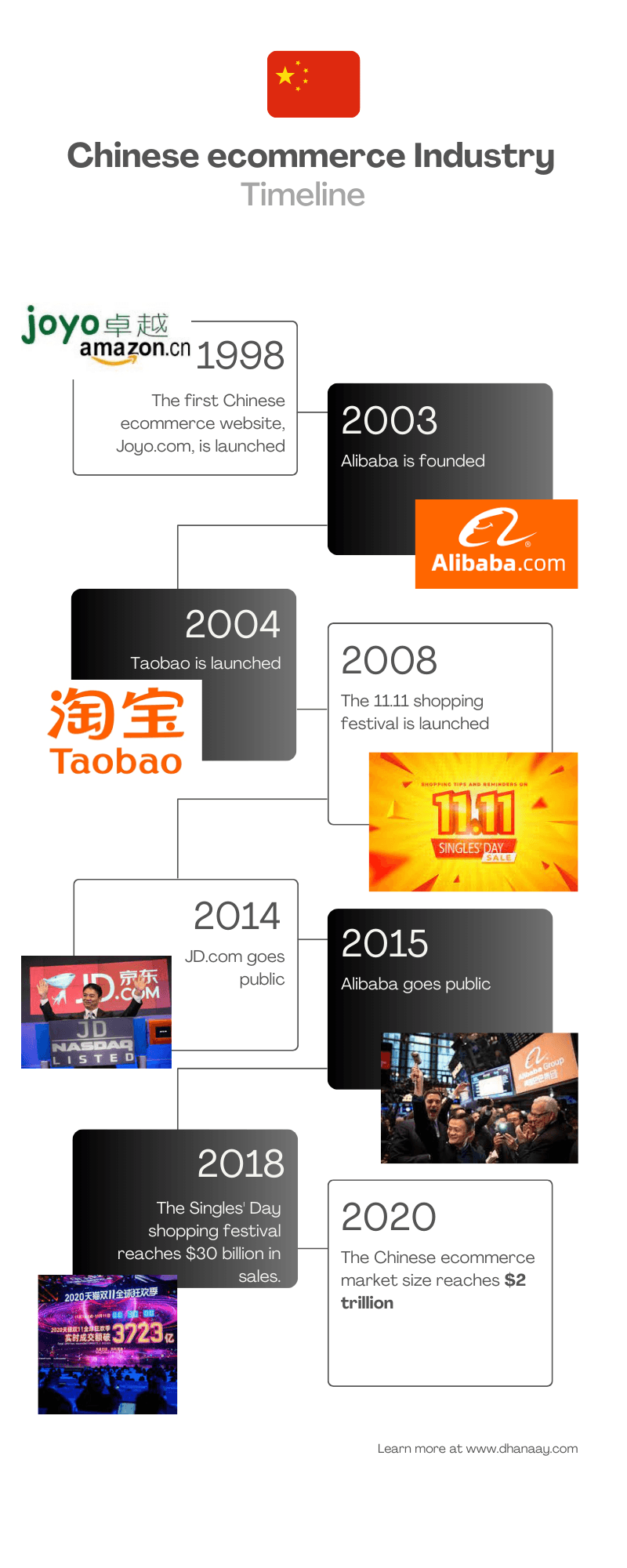Lessons from China's Thriving Ecommerce Industry
Introduction
China's ecommerce industry is the largest in the world, with a market size surpassing a colossal $2 trillion. This phenomenal growth can be attributed to key factors like the rapid rise of mobile internet usage, the expanding middle class, and strong governmental support for e-commerce. By examining the nuances of China’s ecommerce landscape, businesses worldwide can uncover valuable lessons to apply to their own strategies.
1. Embrace Mobile: The Powerhouse of Chinese Ecommerce
In China, mobile is not just an accessory—it’s the primary channel through which consumers shop online. With the majority of the population accessing the internet via smartphones, businesses looking to succeed must prioritize a robust mobile presence. From mobile-optimized websites to apps and integrated payment systems like Alipay and WeChat Pay, optimizing for mobile is a non-negotiable element for ecommerce success in China.
Fact: Over 80% of all ecommerce transactions in China are done via mobile devices, highlighting the crucial role mobile plays in driving sales. (Source: Statista)
2. Harness Social Media: A Catalyst for Traffic and Sales
Social media in China is more than just a tool for socializing—it’s a powerful driver of ecommerce activity. Platforms like WeChat, Weibo, and Douyin (TikTok’s Chinese counterpart) play a central role in connecting businesses with consumers, driving traffic, and fostering direct sales. Businesses that effectively harness social media to build brand awareness, promote products, and engage with consumers can create an ecosystem that supports both customer acquisition and retention.
Tip: Consider creating interactive campaigns or influencer collaborations to enhance brand visibility and engagement on these platforms.
3. Prioritize Superb Customer Service
In China, customer service is a make-or-break factor. Consumers have high expectations for responsiveness, quality, and after-sales support. Ecommerce businesses must go above and beyond to meet these expectations, offering fast response times, easy returns, and proactive customer support. Companies that deliver exceptional customer service build trust, loyalty, and a strong reputation, while those who fail to do so risk losing customers to competitors.
Insight: Studies show that over 80% of Chinese consumers will switch brands after a single bad customer service experience. (Source: McKinsey & Company)
4. Embrace Innovation: A Constant Necessity
The Chinese ecommerce industry thrives on innovation. With constant changes in consumer preferences, technology, and competitive dynamics, businesses must relentlessly innovate to stay relevant. From pioneering technologies like AI and big data to exploring new business models like livestream commerce, companies must stay ahead of the curve to maintain their competitive edge.
Example: The rise of livestreaming as a sales tool has exploded in China, with platforms like Taobao Live generating billions in sales annually. This model offers real-time interaction and the ability to instantly purchase products, making shopping an engaging, live experience.
Timeline of the Evolution of China's Ecommerce Industry
The rapid evolution of China’s ecommerce industry has been marked by several key milestones. Here’s a look at its growth trajectory:
- 1998: Launch of Joyo.com, China’s first ecommerce website (acquired by Amazon in 2004).
- 2003: Alibaba founded, revolutionizing ecommerce in China and globally.
- 2004: Launch of Taobao, Alibaba’s C2C platform, directly challenging eBay in China.
- 2008: The 11.11 Shopping Festival (Singles’ Day) begins, eventually becoming the world’s largest online shopping event.
- 2014: JD.com, another major player in Chinese ecommerce, goes public.
- 2015: Alibaba goes public in what was the largest IPO in history at the time.
- 2018: Singles’ Day sales exceed $30 billion in just 24 hours.
- 2020: China’s ecommerce market size reaches a staggering $2 trillion.

Valuable Takeaways from China's Ecommerce Industry
From the Chinese ecommerce success story, businesses across the globe can adopt the following best practices:
- Prioritize Mobile: Build a mobile-first strategy to cater to the increasing number of mobile shoppers, especially in markets with high mobile penetration like China.
- Leverage Social Media: Use social platforms to drive engagement, create authentic brand connections, and boost sales.
- Excel in Customer Service: Focus on delivering exceptional service that meets or exceeds customer expectations to build loyalty.
- Foster Innovation: Constantly innovate to stay competitive, whether through new technologies, unique business models, or creative marketing approaches.
Conclusion
By analyzing the strategies that have fueled the success of China’s ecommerce industry, businesses worldwide can better navigate their own ecommerce journeys. From embracing mobile-first approaches to leveraging the power of social media, customer service excellence, and relentless innovation, the Chinese market offers a treasure trove of lessons. Businesses that stay agile and adopt these strategies will be better positioned to succeed in the ever-evolving world of ecommerce.
Final Thought: If you're not innovating, you're falling behind. The Chinese ecommerce market is a testament to how fast-paced and transformative the industry can be—those who adapt, thrive.